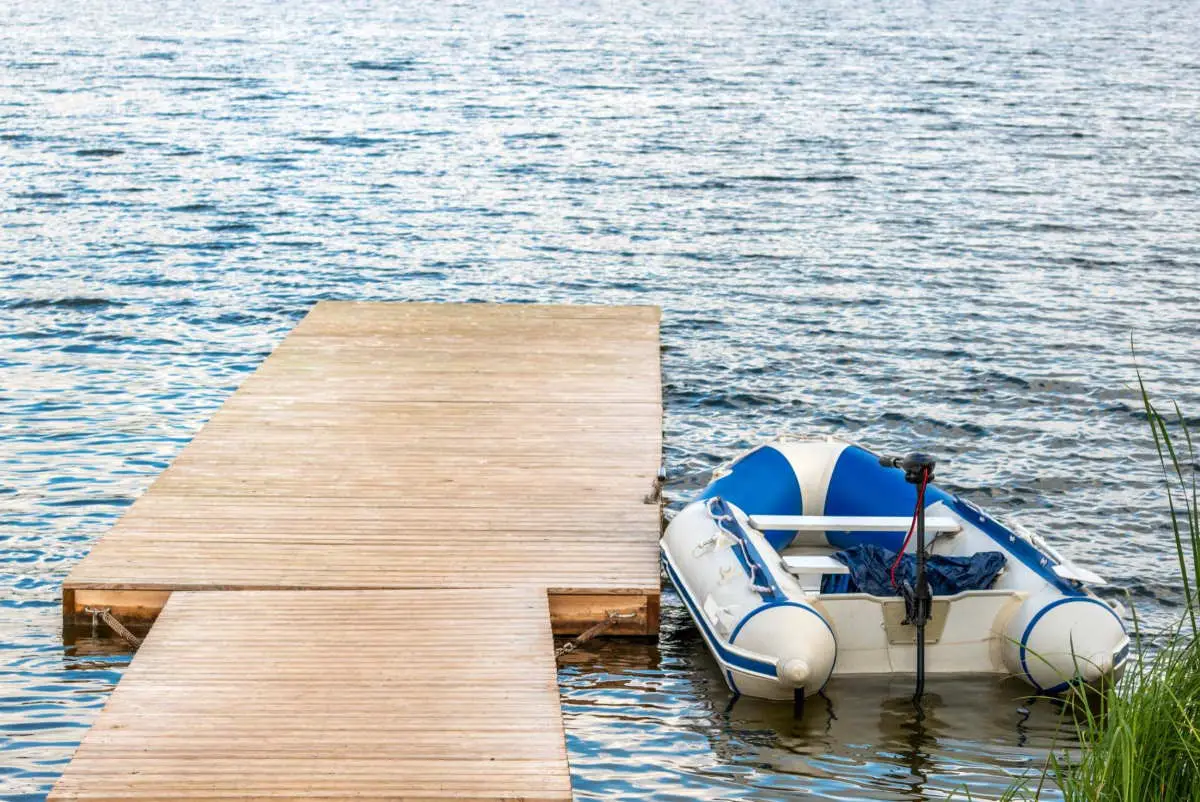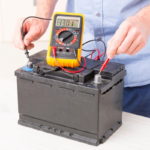Fishing enthusiasts can spend thousands of dollars on a new electric trolling motor yet never understand its essential properties. If you’re new to electric trolling motors and want to own one, you may want to know whether they’re waterproof.
The entire lower unit of an electric trolling motor is waterproof because it is isolated from water damage by water-tight seals and O-rings. Trolling motors’ control and steering units are encased in water-resistant housings that can have different levels of water-resistants that vary from each manufacture and model.
The rest of this article will dive deeper into the topic. Read on to find out what parts of the trolling engine are waterproof, which ones are just sealed, and how that affects your journeys out to the water.
Note: most links in this article are Amazon.com Affiliate links, see Affiliate Disclosure, thank you.
Are Electric Trolling Motors Sealed?
All electric trolling motors have sealed motor housings. Because the motor’s lower unit is submerged during operation to prevent overheating and improve efficiency, the motor itself is sealed in a water-tight housing. Other motor parts are sealed with some level of water resistance to prevent water damage.
With that out of the way, let’s move on to answering other questions related to electric trolling motors and their waterproof abilities. Let’s take a look at how the motor and the control units are sealed and what should you pay special attention to with these parts of the electric trolling motor:
An Accident May Cause Water To Enter the Electric Trolling Motor
As already mentioned, the entire lower unit of any trolling motor is designed to be submerged in water. As this part of the device also contains the actual motor, it must be waterproof to ensure proper operation. However, there’s one thing that every electric trolling motor operator should keep in mind:
If the trolling motor has suffered any damage, the water-tight seal might be compromised. Whether the damage was caused in a collision with an underwater object or in any other way, the electric trolling motor that has been damaged should not be used until a service certified for the brand in question inspects it.
Being careful with the depth in which you use your trolling motor and the way you transport the device is just one of the ways you can ensure that you can get back on the water as soon and as safe, as possible.
The Electric Trolling Motor Steering Unit Isn’t Waterproof
While the actual engine powering your electric motor is sealed and waterproof, the situation is not the same for the rest of the trolling motor’s components. The top section of the trolling motor that is used to control and steer the boat is just water-resistant. Even though this section of the device is water-resistant, it is not waterproof. Why is this the case?
The top section of the trolling motor, or the head, is not completely sealed as it requires air to cool down the internal components. What this means is that the top part of the trolling motor should never be submerged, as the water can cause irreparable damage to the unit.
The head of the trolling motor has enough protection to keep the water from entering. Provided the device is used according to instructions and within reason, you need not worry about the lack of complete waterproofing.
Water Level Can Affect Your Trolling Motor’s Performance
Another common question with all types of trolling motors is how deep the water needs to be for them to work. While the level of water needed can depend on various factors such as motor type and prop shaft length, there’s a general rule of thumb to stick to:
There should always be around 6 inches (15 centimeters) of water above your trolling motor’s blades for optimal movement. Depending on the electric trolling motor model you’re using, this means that the prop shaft should be between 12 and 18 inches (30 and 45 centimeters) in the water.
According to the data presented above, you should avoid lowering your trolling motor in water lower than 12 to 18 inches (30 and 45 centimeters). Avoiding the optimal depth can lead to the propeller blades or the engine compartment itself colliding with underwater objects. As already mentioned, this can affect the trolling motor’s water-tight sealing.
Is It Safe To Leave an Electric Trolling Motor in the Rain?
By now, you already know which parts of the electric trolling motor are waterproof and which ones you should keep away from excessive amounts of water. The situation remains unchanged with rain.
It’s not recommended to leave an electric trolling motor in the rain, even if the lower part of the equipment is waterproof. The upper section of most electric trolling motors is susceptible to water damage. You should store your trolling motor properly to protect it from the elements. Storage may include a waterproof cover or removal to store in a dry space.
There are a few other things to keep in mind when it rains:
- You should always keep your trolling motor covered when not in use.
- Always remove and rinse off the motor that’s been used in saltwater.
To ensure that your new electric trolling motor lasts as long as possible, you should always remove it from the water. The best option is to take the motor of the boat and store it safely, covered with a tarp. A tarp will ensure that the motor is safe from bad weather and lower the potential risk for theft.
Although it has its magic, saltwater trolling can require a ton of upkeep. We’re all aware of how seawater affects our boats and their paint. Unfortunately, it has similar effects on the motor.
Removing and washing (with water) the electric trolling motor that’s been used in a saltwater environment is especially important. Despite the fact that special protective materials are used to paint the device and insulate the trolling motor’s wires, saltwater can cause premature degradation of the trolling motor’s components.
Are Electric Trolling Motor Batteries Waterproof?
After going through all of the water-related info on electric trolling motors, let’s take a look at the batteries used to power them. Are the trolling batteries waterproof?
Electric trolling motor batteries (12-volt batteries) are not waterproof. For this reason, the battery should always be protected from the water. Avoid leaving the trolling batteries exposed on the deck and store them safely to prevent damage and potential injuries.
Direct exposure to water will not only cause damage to the battery, but it can also be potentially harmful to anyone onboard the trolling boat. While both freshwater and saltwater are harmful to exposed trolling motor batteries, exposure to the latter will drain the battery much more quickly and present a significantly higher risk for the fishermen.
You can properly store your trolling motor battery with the following tips:
- Store the battery within the boat’s hatches.
- Use a battery box to protect the battery.
- Remove or cover the battery when it rains.
Those who would like to avoid potential injury or getting stranded in the middle of nowhere with no juice to get their trolling boat back to shore should use one of the battery protection methods listed above.
One final note when storing a battery, make sure to keep it connected to a compatible battery maintainer in a well-ventilated area. Maintaining an acid-based battery is very important to maximum life cycles.
Conclusion
While all of their main components are water-resistant, electric trolling engines are prone to damage in some cases. Here are just some of those instances:
- After suffering damage to the motor
- When the control unit is submerged in water
- When the entire electric trolling engine is left in the rain
To prevent any damage and ensure the longevity of your electric trolling motor, follow the tips from this article and make sure to follow all of the manufacturer’s guidelines for your engine model.



